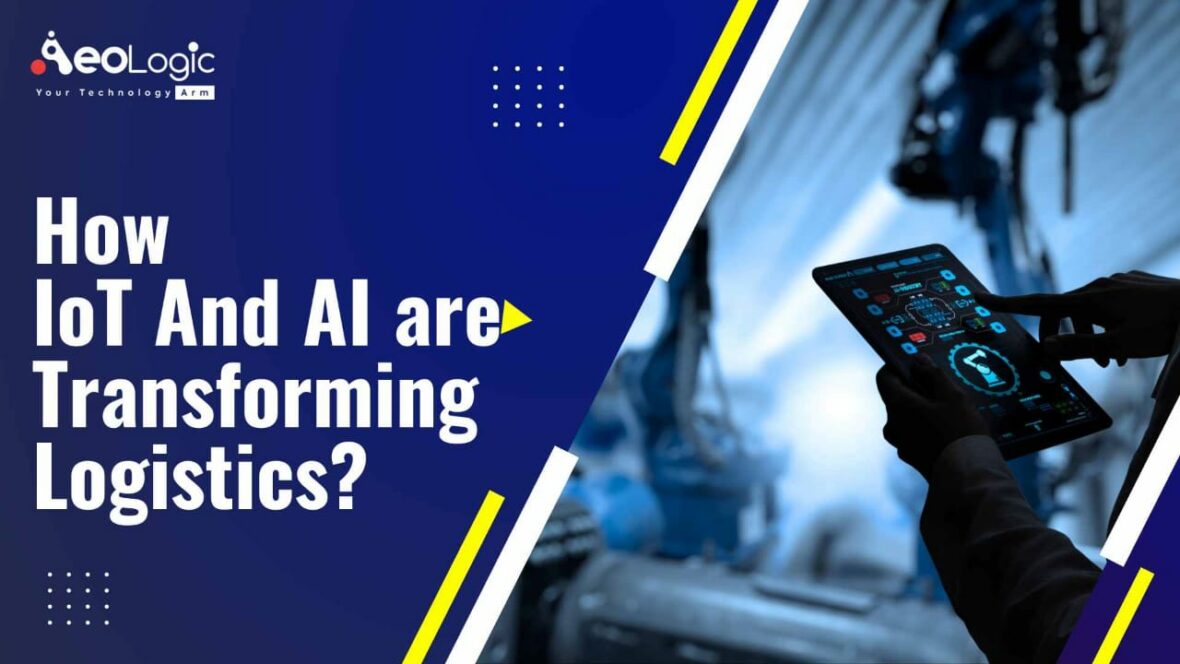One of the major tasks in logistics is keeping track of where everything is. Whilst most transportation and logistics service providers employ mobile technologies. A continuously changing regulatory environment, rising labor rates, increased traffic, and fuel prices can all impact operations. In addition, companies are also facing increasing demand from the market for increased transparency. The recent developments in IoT and AI are transforming logistics. The future of logistics is data-driven, intelligent supply chains employing machine learning (ML) systems. AI can provide increased optimization in logistics. All while providing businesses speed and flexibility in meeting industry trends and customer demands.
Also read: How Technology Is Changing the Future of Logistics
Remote monitoring and Real-time Tracking Solutions for Smart Logistics
IoT and AI are transforming logistics and keeping almost everything connected (e.g., assets, trucks, etc.) using embedded sensors. This gives unprecedented visibility into personnel, operations, equipment, and transactions. Furthermore, by taking the proper intelligent solution in place, companies can link all their assets across a centralized cloud network. Also, capturing critical data for further analysis with ML models will ensure operations are in good working order.
Logistic operations will benefit not only by improved asset tracking and remote fleet management. But also, through enhanced compliance, performance, agility, risk reduction, and efficiency. Proper IoT-enabled infrastructure is needed to be formed and deployed. Since it enables an organization to easily locate and monitor key assets. Such as optimizing logistics, preventing quality issues, and maintaining inventory levels. Users can analyze the gathered data and recognize patterns to take the right actions and optimize business processes. IoT-driven solutions enable fleet managers to monitor and manage everything through a single interface. Moreover, this helps them make informed decisions about how goods are monitored, stored, routed, and delivered to customers. AI-generated predictive analytics can also be deployed to avoid risk, optimize routes, and predict demands. Moreover, it can prevent inaccurate stocking, and respond proactively to future developments.
What IoT and AI in logistics can do for you
1. Remote asset tracking
In asset tracking systems IoT refers to automating processes. As well as adding AI parts to several previously performed workflows. IoT-enabled asset management offers predictive maintenance, top-down visibility, and real-time alerts. With the help of IoT sensors. Companies can track asset data using IoT sensors without human intervention. They can be linked to assets with or without traditional asset tags, such as barcodes or QR codes.
2. Predictive asset maintenance
Predictive maintenance is mainly based on data-driven decisions and real-time monitoring. The distribution of wireless connectivity and advances in IoT and AI are transforming logistics digitally. IoT technology allows sensors to transmit equipment data in real-time. Hence, allowing the authorities to predict asset conditions through advanced analytics. Predictive asset maintenance can aid organizations to reduce downtimes significantly. Thereby eradicating the chances of poor machine performance.
3. Real-time fleet management
IoT technology improves smart and data-driven insights. Also, where managers can detect loopholes in real time for quick decision-making. IoT helps real-time monitoring of fleets in the logistics industry. Delivery management and real-time fleet tracking in logistics are significantly advancing with sensor devices and gateways. Vehicle tracking systems that are accurate and efficient have a track record of minimizing last-mile delivery costs.
4. Warehouse-capacity optimization
With the advent of IoT technology in the logistics sector, transport authorities are finding it more convenient to keep track of the entire supply chain process. Including the warehouse management as well. The installed sensors have the potential to identify the warehouse capacity. And alerts the managers about the requirements with every particular detail. The technology is advanced enough to enable fleet managers to optimize the warehouse capacity wherever and whenever required with a tap on their devices.
5. Route optimization
Logistic operations need a lot of planning, flexibility, and intelligence to address problems. IoT and AI can efficiently automate several processes. However, it can also help companies save a considerable amount of time and money in ensuring smooth operations.
Also read: Digital Solutions Ensure Supply Chain Visibility to Improve Resilience
Conclusion
The Internet of Things and artificial intelligence are rapidly taking over supply chain management. IoT and AI are transforming logistics for the good. These technologies optimize shipment and make processes more gainful, productive, improved, and user-friendly. Mixing the two advanced technologies makes it efficient for transport businesses. And helps in excelling through predictive analysis and data-driven insights. This improves the industry’s potential, covering all aspects and transforming conventional logistics processing into a modernized one.
Contact us at Aeologic Technologies to learn how we can improve your operations in logistics.
FAQs
How AI and IoT are shaping logistics?
AI and IoT are shaping logistics by remote asset tracking, predictive asset maintenance, real-time fleet management, warehouse-capacity optimization, and route optimization.
What are the benefits of implementing AI in logistics?
With an AI-enabled system, you could reserve some capacity before buyer orders have even come in. Implying that you significantly decrease your chances of being shut out by prospective carriers.






